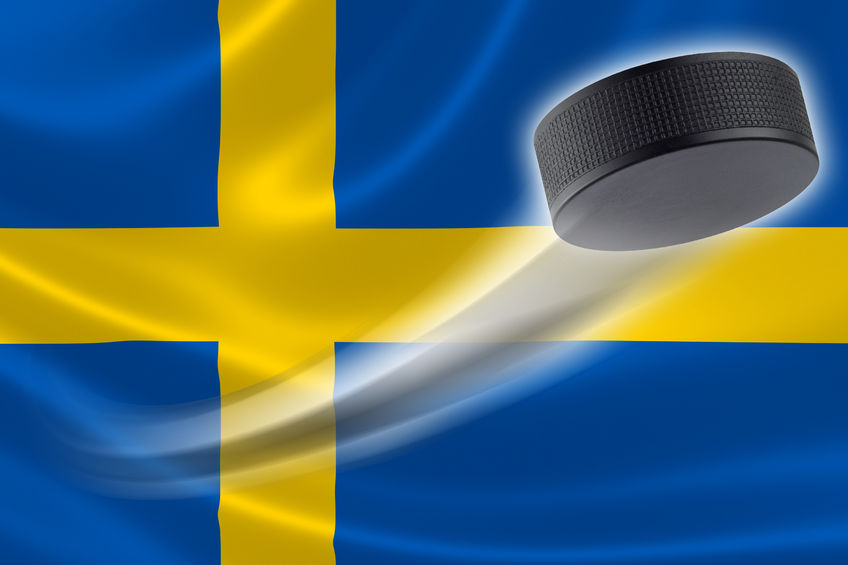
February 15-26, as a part of the XX Olympic Winter Games, the men’s hockey tournament was held in Torino, Italy. For the third time since 1998, players from the National Hockey League (NHL) were allowed to participate. This meant that the nations could put the best team available on the ice and that the winner could name themselves as the greatest hockey nation of the year. This can be put in perspective of the World Championships in which the best players usually are playing in the play offs in the NHL.
Prior Olympic Hockey tournaments
In the 1998 Winter Games in Nagano, Japan, a strong Czech Republic team, with players like Dominik Hasek, came out strong. In fact, they had a short dynasty going on at this time with several golds in both the World Championships as well as in the 1998 Winter Games where they beat Russia in the final. In the 2002 Winter Games in Salt Lake City, USA, Team Canada won the gold by defeating the host nation in the final. In Sweden, the 2002 Games are mostly remembered for an unexpected loss against Belarus in the quarter final. This was followed by a humiliating defeat at home against Czech Republic in the 2004 World Cup of Hockey. Sweden won the Olympic gold in 1994 and the World Championships in 1998, but had a hard time going all the way when all the best players were participating. This would change in 2006.
The group stage of the 2006 Olympic Hockey Tournament
The teams in Torino 2006 were divided into two groups which finished in the following way:
Group A
Finland
Switzerland
Canada
Czech Republic
Germany
Italy
Group B
Slovakia
Russia
Sweden
United States
Kazakhstan
Latvia
Finland and Slovakia won the groups with 5 straight victories. Notably was Switzerland’s success in group A, with a second place before nations like Canada and Czech Republic. Sweden, with players like Nicklas Lidström, Mats Sundin, Peter Forsberg and Henrik Lundqvist, finished third in group B after some rather mixed performances.
Playoffs
In the quarter finals, Sweden was up against Switzerland after the Three Crowns lost the last group stage game against Slovakia. This was a pretty beneficial draw after ending third in the group. The game ended 6-2 in favor of Sweden and they advanced to the semi final against Czech Republic who eliminated their rivals Slovakia. This tournament would not be based on how the teams managed to place themselves in the groups, it would be all about winning the important playoff games. Finland and Russia eliminated the North American teams, which as this time often had a great drawback from the larger European ice rinks. Both USA and Canada has become more mobile nowadays though, much thanks to the modern ice hockey which is based on agile defenders and fast forwards.
In the semifinals, Sweden got a great start against the Czechs and won rather comfortable 7-3. Finland eliminated their Eastern rivals Russia 4-0, just like they did in the quarterfinals of the 2014 Olympic Games in Sochi. The final would thus, be a showdown between the Nordic rivals: Sweden’s Three Crowns against Finland’s Lions.
In the final, Finland got the best start with an early lead. Sweden managed to both tie and take the lead, which was shortly equalized by Finland. Before the third period, the game was tied at 2-2.
The beginning of the third period is a Swedish classic: On the face off, Saku Koivu’s stick broke. Peter Forsberg rushed into the offensive zone, dropped the puck to Mats Sundin who dropped it to Nicklas Lidström who did as he had done so many times before as a captain in the Detroit Red Wings: Shot a laser beam from the blue line which found the way back in the Finnish net. 3-2 Sweden. At the end, Finland put the pressure on for an equalizer, but goalie Henrik Lundqvist stood firm and did some decisive saves. Sweden won their second Olympic Gold medal, this time with all the best players participating. A curse was lifted and our golden generation finally got to win a big tournament together! Later in 2006, Sweden became the first team to win both the Olympics and the World Hockey Championships the same year.

